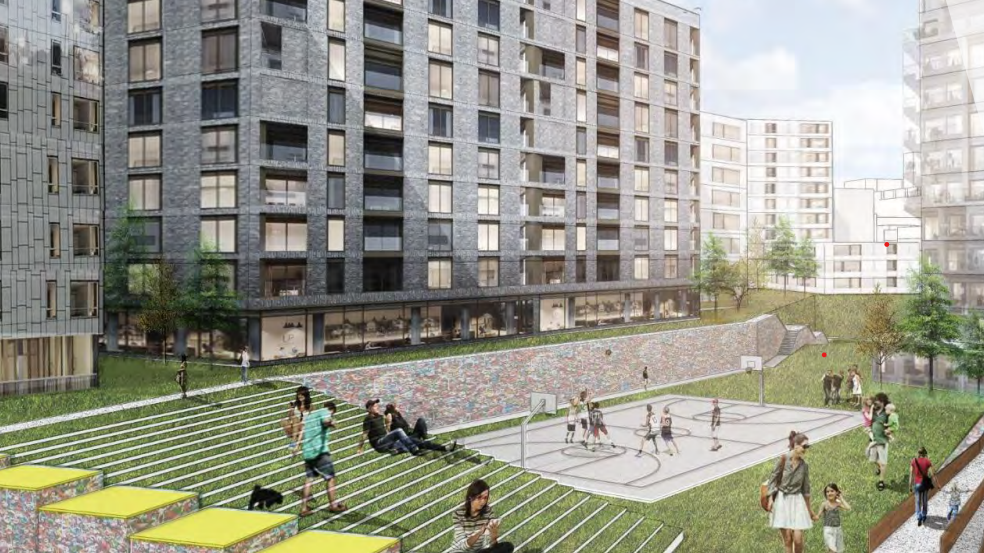Housing crisis
Let's build more houses above highways and near railways

The Netherlands is facing multiple crises: a housing one, which is especially dire for students (link in Dutch); a loneliness one, which hits young people particularly hard (link in Dutch); and an energy one. As is the case with most public policy problems, there are overlapping causes — the population growth and the nitrogen crisis come to mind — but there is a single public policy change that could arguably hit a few birds with one stone: student houses, a classic Dutch institution in which students live together at a lower cost.
Although they have a reputation of being a “nuisance”, “dirty” and infested with scabies, it doesn't have to be this way. Not only is this form of housing good young people's budget and emotional development, its benefits do not accrue to students alone. Broadly speaking, by taking pressure off regular housing units (such as apartments, starters' homes, etc.), student houses can help reduce pressure on the overall housing supply, meeting an unmet need.
Homeowners are reluctant to invest in student accommodation. They understandably fear a fall in the value of their property due to loud and “dirty” students, which makes student housing difficult to build. As a general rule, building extra student accomodation isn’t popular among municipalities and residents (link in Dutch). This results in policies discouraging or preventing the construction or existence of student houses. These policies can —and should — change to enable this type of accommodation to be built, albeit in a way which minimises negative effects for the neighbours.
Studios do not meet students' needs
While it is arguably not desirable to concentrate students in a single area of the city, that is still preferable to investor-built studio-style housing or no housing at all. Studio apartments do not meet students' needs (like in Dutch), not to mention they are notoriously expensive both for the students and for the government itself, which ultimately has to pay the price as students apply en masse for rent allowance. Such apartments often have a larger area and require more resources on a per unit basis than a room which uses shared facilities. Therefore, shared living, if done right and constructed with a high energy efficiency rating, helps more people to live and contribute to the Dutch culture and economy, all with a smaller environmental footprint.
Projects like the one being studied at Tussen de Rails (link in Dutch) offers the possibility of additional land for housing units in the city of Utrecht. The idea is to build 150 to 250 temporary houses between two lines of the railway in Lunetten. This area has the added benefit of being somewhat isolated from other residential areas, reducing nuisance for homeowners, making Tussen de Rails perfect for this purpose.
Similar projects are also possible near highways. While research shows that living near a highway is not good for one’s health due to exposure to fine particulate air pollution (link in Dutch), it is possible to argue that the overall burden on public health is minimal given the short time period of time in which students will be living in the house (no more than 5 years). There should be a norm to make sure that the air pollution level is acceptable for the students living in these houses.
A parkway over the existing freeway
Such efforts are already underway in Seattle where they intend to put a “lid” parkway over the existing freeway and construct housing on top of it. We could consider doing the same on the A27 motorway as it could help further minimise negative health effects, with the added benefit of providing linear green space for all residents to enjoy as well as an additional area for housing that would allow more people to live and contribute to the city of Urecht.
In addition, thoughtful urban design can help reduce noise and other issues, making it easier for the government to deal with these issues when they arise. Think of student housing areas surrounded by linear parks which reduce noise pollution. This example in Delft show that collaboration efforts to tackle nuisance are made easier if the problem is concentrated.
Solving more than one crisis
The student housing situation in Utrecht and other popular university cities is expected to worsen in the next few years, according to the national student housing survey. And that's considering student housing alone, separate from the rest of the market. Building more student houses in and of itself will not solve the Dutch housing crisis as the problem is caused by multiple systemic factors related to housing preferences, population growth, and shifting ownership structures.
But doing so will provide temporary relief and help students live in a more affordable setting with people of similar age –something they would prefer, according to surveys including the national student housing survey, which also shows that student houses can help reduce loneliness. In addition, the apartments and studios currently occupied by many students would become available for starters and people with families. The time to work on policies enabling the construction of more student houses is now.